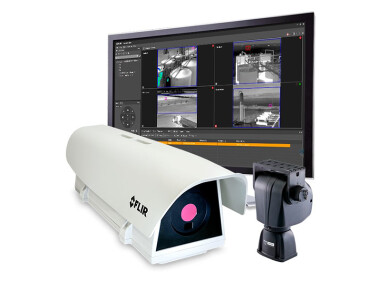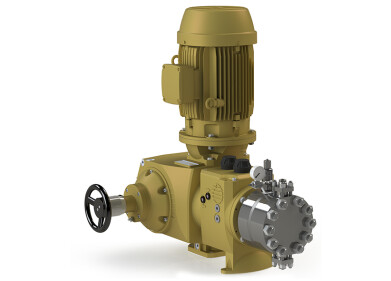Measurement and Testing
Polymer Characterisation - Techniques, Types & Properties
Jun 07 2022
From plastics to proteins, polymers of our everyday lives. Many are synthetic and others are the building blocks of living organisms. Polymer characterisation allows scientists to analyse these materials in high resolution and unlock insight into their unique properties. Read on to find out more about polymer analysis techniques and their applications.
Polymers: 101
To be defined as a polymer, a material must be made of long, repeating chains of molecules. Each ‘link’ is called a macromolecule and is made up of smaller chemical units known as monomers. When joined together, a group of monomers becomes a polymer.
What is polymer characterisation?
Polymer characterisation is concerned with the unique mass and molecular structure of polymer materials, both natural and synthetic. These properties affect the behaviour of polymers, which makes polymer characterisation a useful tool for decision makers.
Within the field of polymer characterisation are other niches, such as polymer morphology. This highly specialised field focuses on the structures of polymers and the relationships between monomers and molecules.
A short history of polymers
Like many scientific terms, the word ‘polymer’ has Greek origins. It’s derived from the words ‘polu’ meaning ‘many’ and ‘meros’ meaning ‘a share’. The term polymer was coined in the 19th century when polymers became popular in the manufacturing industry. Naturally, demand for analytical methods for polymer characterisation exploded.
The first polymer material was developed by English inventor Alexander Parked in the 1840s. He developed a synthetic plastic made from nitrocellulose, which formed the building blocks of the artificial plastics used today, such as polypropylene and polyethylene. A single polypropylene or polyethylene molecule can contain between 10,000 and 200,000 monomers.
Synthetic vs natural polymers
While polymers have a reputation for being synthetic, this isn’t always the case. Sure, products like plastic water bottles, silicone earbud tips, car tyres and fabrics used to make clothing and shoes are made from polymers. But many polymers are naturally occurring, including proteins such as keratin, cellulose and nucleic acids. Wood and rubber are also good examples of natural polymers.
Why is polymer characterisation important?
Polymer characterisation allows scientists to unlock information about the properties of polymer materials. As polymer materials have innumerable applications, polymer characterisation is hugely relevant to a wide range of sectors and industries. Below, we take a closer look at some of the different applications for polymer characterisation and why it’s so important.
-
Quality control in the plastics manufacturing industry
From plastic water bottles to the flexible films used to package microwave meals, polymers are widely used in the food and beverage industry. Polymer plastics are also used in the healthcare and pharmaceuticals industries, which are subject to strict packaging and safety standards. Polymer characterisation allows manufacturers to keep a close eye on quality control and ensure the plastics are up to standard.
-
Improving product performance
Polymer plastics are often coveted for their durable, long-lasting qualities. For example, high-density polyethylene (HDPE) produced from ethylene monomers is widely used on boats thanks to its excellent weatherproof properties. Despite its popularity, HDPE manufacturers are continually exploring ways to improve product performance and develop even more weather-resistant polymers. Polymer characterisation helps HDPE manufacturers develop a better understanding of how a material will perform.
Teflon, a synthetic chemical used to give pot and pans a non-stick surface, is one of the most recognised polymers in the world. Also known as polytetrafluoroethylene (PTFE), Teflon is produced by the polymerisation of a fluorocarbon called tetrafluoroethylene. Like HDPE, manufacturers are continually on the hunt for new ways to improve the product and enhance performance.
-
Developing new polymer materials
From graphene-based composites to mixed matrix membranes, polymer analysis techniques drive research and development in the polymer industry. For example, polymer characterisation is helping engineers develop a new era of eco-friendly materials known as “green” polymers made from renewable resources such cellulose derivatives, thermoplastic starch (TPS) and biomass.
In Europe, British based chemicals company INEOS is manufacturing eco-friendly polymers used to coat the insides of dairy and beverage cartons. The mass-balanced polymers are made using oil-based, renewable naphtha sourced from Finnish company, UPM Biofuels. As a by-product of pulping processes carried out by the forestry sector, the naphtha has a minimal environmental footprint.
“We are committed to replacing fossil-based feedstocks with renewable alternatives,” says UPM Biofuels sales and marketing director, Juha Rainio. “An excellent example of this is our UPM BioVerno naphtha, produced from tall oil - a sustainable residue of wood pulp processing – in our unique Lappeenranta Biorefinery in Finland.”
A closer look at polymer analysis techniques
Scientists rely on a variety of techniques for polymer characterisation. We take a closer look at some of the most popular below:
Chromatographic polymer characterisation
Chromatography, an analytical technique used to separate mixtures into individual components, is one of the most useful tools for polymer characterisation. In the book Advanced Functional Polymers for Biomedical Applications, the authors explain how chromatographic polymer characterisation plays a critical role in mapping the composition and molecular weight distributions of polymers.
Thermal polymer characterisation
A variety of thermal analysis techniques are used to characterise polymers and gain insight into structure and behaviour. Differential Scanning Calorimetry (DSC) is one of the most common and measures how much heat is needed to increase the temperature of a polymer sample. Data helps manufacturers and product developers determine key thermal transition temperatures. These include glass transition temperature (Tg), melting temperature (Tm) and crystallisation temperature (Tc).
DSC is especially useful in the pharmaceutical industry, where scientists use the technique to characterise the behaviours of drug compounds and ensure products aren’t affected by issues such as crystallisation.
Thermogravimetric Analysis (TGA) is another widely used thermal analysis technique. It works by measuring weight changes when the polymer is exposed to different temperatures. Increases or decreases in weight can be used to predict how a polymer will behave when exposed to harsh environments. Data can also be used to predict how polymeric materials will react to processes such as oxidation and decomposition. Other useful thermal analysis techniques for polymer characterisation include thermomechanical analysis (TMA) and Dynamic Mechanical Analysis (DMA).
Spectroscopic polymer characterisation
In the book Spectroscopic Techniques for Polymer Characterisation: Methods, Instrumentation, Applications, the authors introduce the cutting-edge spectroscopy techniques being used for polymer analysis. From widely used materials like nylon to complex polymeric nanocomposites, modern spectroscopy is redefining how polymer materials are characterised.
Of particular interest are the chapters on the use of Near-Infrared (NIR) spectroscopy and NIR imaging for polymer characterisation. The technique analyses electromagnetic spectra in the NIR region and is used extensively across a wide range of industries, including engineering and industrial manufacturing.
“NIR light has high penetration in polymeric materials; thus, NIR spectroscopy is also applicable for polymeric products of various sizes, with the thickness ranging from micrometres to centimetres,” reads an excerpt from Chapter 5. “NIR spectroscopic imaging could be used in industrial applications, such as quality control, the inspection of polymer films, and the discrimination of specific components in a large number of parts.”
Microscopic polymer characterisation
Used to reveal surface structures and patterns, microscopic polymer characterisation is a powerful tool used to analyse polymer materials. Sophisticated instruments enhance what’s visible to the naked eye and allow researchers to observe the individual atoms that make up polymers.
Over the past decade, advanced techniques such as Scanning Electron Microscopy (SEM) and Transmission Electron Microscopy (TEM) have replaced traditional optical microscopes. Both are classed as electron microscopy techniques and allow analysts to generate high-resolution images of polymer samples.
Rheometric polymer characterisation
Polymers have a higher molecular weight than other materials, which means they can exhibit unusual deformation behaviours. It’s this characteristic that makes many polymers elastic and viscous. Rheometric polymer characterisation allows researchers to analyse the viscoelastic properties of polymers, optimise manufacturing formulas and improve product performance.
Mechanical polymer characterisation
Strength, elasticity, viscoelasticity and anisotropy are some of the most important properties used to characterise polymers. These are known as mechanical properties and are influenced by interactions between individual polymer chains. Mechanical properties are also impacted by the ability of chains to stretch and realign when exposed to force. A tendency for crazing, which occurs when a polymer material is placed under stress and begins to turn white, can also affect the mechanical properties of polymer materials. Generally, polymers are categorised as elastomers, plastics or rigid polymers depending on mechanical properties.
The future of polymer characterisation
Polymer manufacturers are continually on the search for new ways to improve the strength, longevity and performance of materials. Nanotechnology has an important role to play when it comes to polymer research. Analysing polymers on the atomic, molecular and supramolecular scale allows scientists to develop cutting-edge materials used for everyday consumer products, as well as high performance applications. Find out more in ‘Advances of Nanotechnology in the Petroleum industry’.
Digital Edition
PIN 25.2 Apr/May
May 2024
Safety - Carbon monoxide toxic and flammable gas detection Analytical Instrumentation - Density: A fundamental parameter at critical stages within the petroleum sector - Advancements and...
View all digital editions
Events
Jul 10 2024 Birmingham, UK
Thailand Oil & Gas Roadshow 2024
Jul 11 2024 Rayong, Thailand
Jul 20 2024 Denver, CO, USA
Jul 21 2024 Cape Town, South Africa
Jul 24 2024 Bogata, Colombia


















